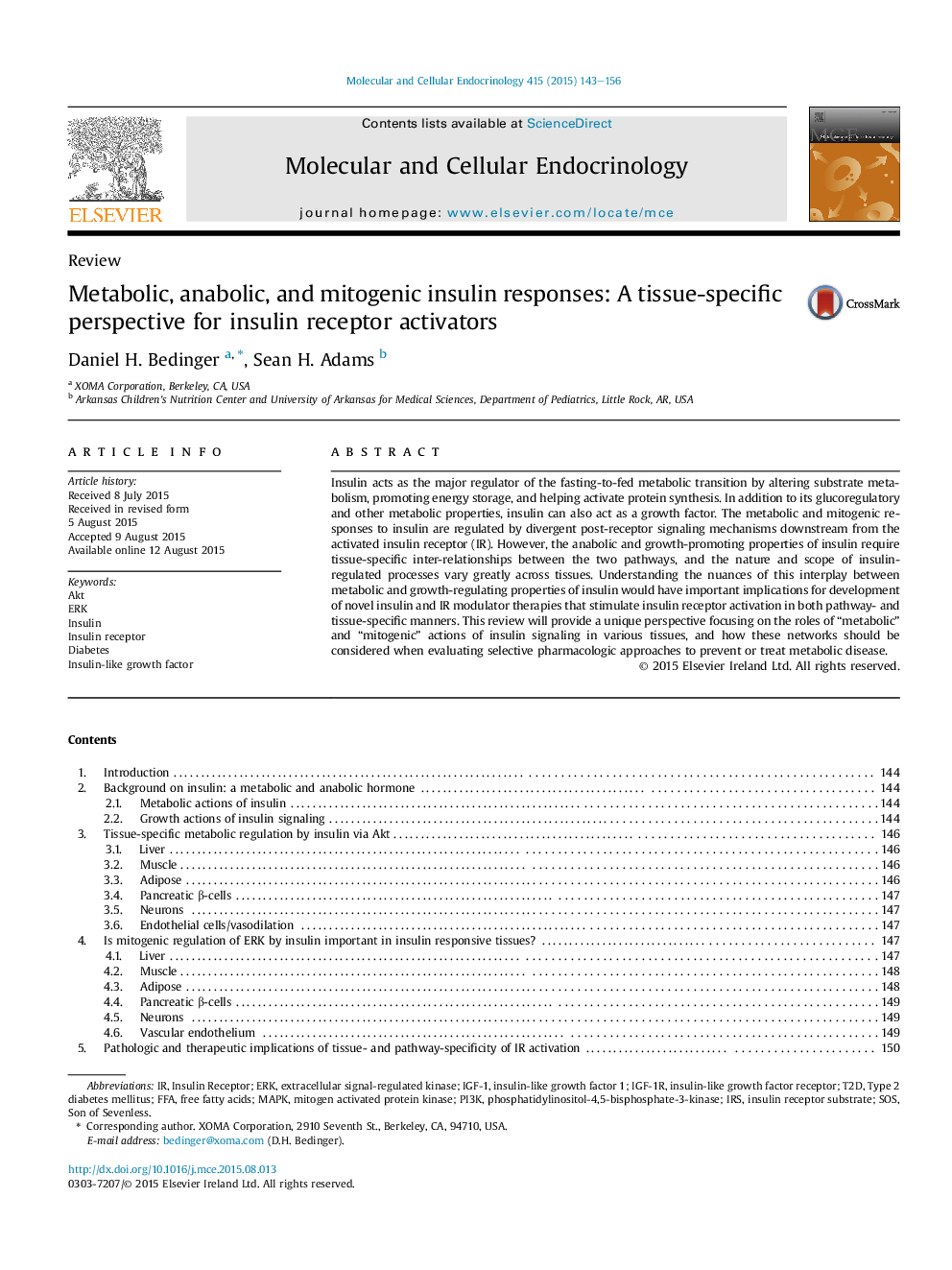| Article ID | Journal | Published Year | Pages | File Type |
|---|---|---|---|---|
| 2195693 | Molecular and Cellular Endocrinology | 2015 | 14 Pages |
•We review tissue-specific insulin responses and the relevant activation pathways.•Some insulin responses are beneficial to the treatment of diabetes, others are not.•Selective insulin receptor (IR) agonists may differentially target certain tissues.•Selective IR agonists may differentially target certain signaling pathways.•Selective IR modulators may be beneficial for the treatment of diabetes.
Insulin acts as the major regulator of the fasting-to-fed metabolic transition by altering substrate metabolism, promoting energy storage, and helping activate protein synthesis. In addition to its glucoregulatory and other metabolic properties, insulin can also act as a growth factor. The metabolic and mitogenic responses to insulin are regulated by divergent post-receptor signaling mechanisms downstream from the activated insulin receptor (IR). However, the anabolic and growth-promoting properties of insulin require tissue-specific inter-relationships between the two pathways, and the nature and scope of insulin-regulated processes vary greatly across tissues. Understanding the nuances of this interplay between metabolic and growth-regulating properties of insulin would have important implications for development of novel insulin and IR modulator therapies that stimulate insulin receptor activation in both pathway- and tissue-specific manners. This review will provide a unique perspective focusing on the roles of “metabolic” and “mitogenic” actions of insulin signaling in various tissues, and how these networks should be considered when evaluating selective pharmacologic approaches to prevent or treat metabolic disease.
